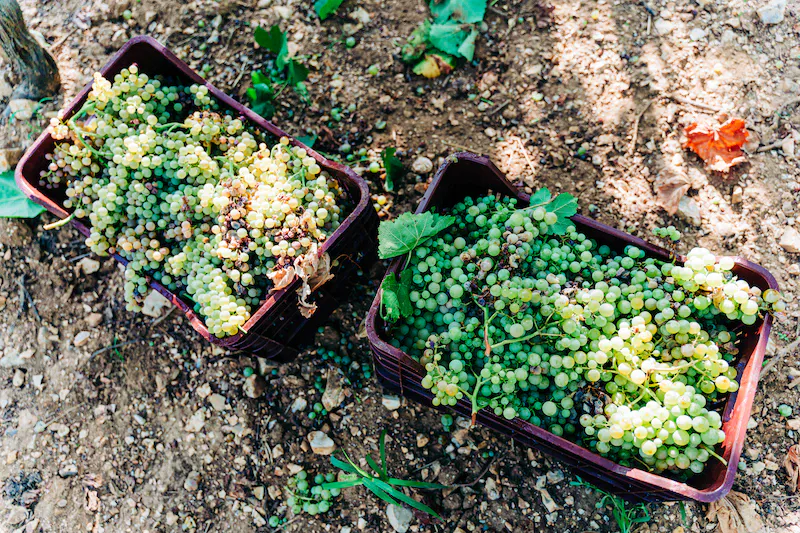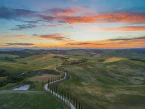Puglia: Italys Authentic Paradise Awaits Exploration

Discover Puglia: Italy’s Authentic and Affordable Gem
Imagine a destination where you can experience the “real Italy,” with a rich cultural history, diverse landscapes, and an incredible culinary scene. Look no further than Puglia, the stiletto on Italy’s famous boot. This enchanting region boasts over 4,000 years of history, over 500 miles of coastline, and a plethora of unforgettable experiences.
A Blend of Cultures and Architectural Styles
Puglia is a unique meeting place for the Adriatic and Ionian seas, with a heritage deeply rooted in its geography. Dotted with port cities, the region has seen entire civilizations blend together, resulting in a dynamic fusion of cultures and architectural styles. The only common elements across the region are verdant rolling green hills, dusty copper-colored roads, magnificent ruins, and an abundance of wild cacti.
Adventure Along the Coastline
For the more adventurous visitors, Puglia’s stunning naturally-occurring caves are a must-see. Not only have they attracted poets and archaeologists, but they also offer the chance to bathe in pristine blue waters, scale sheer limestone cliff faces, or dine in the stunningly romantic Grotta Palazzetti near Bari, where banquets have been held since the 1700s.
Explore Puglia’s Cities and Towns
Begin your journey in Bari, the capital of Puglia and one of the few towns you can fly into. This populous city offers visitors two cathedrals, a charming old town, a medieval castle, a major shopping district, and a lively nightlife scene.
Venture south to discover the Torre Guacito in Brindisi, a nature reserve and home to some of Italy’s best beaches. Nature lovers should also check out the Ionian dolphin conservation in Taranto, offering dolphin and whale spotting trips throughout the summer. Winter visitors can witness one of Europe’s largest gatherings of pink flamingos in the salt flats, Salina de Mona Chi, south of Taranto.
Experience Italy’s Magnificent National Parks
Puglia is home to not one, but two of Italy’s remarkable national parks. The Gargano National Park spans more than 400 square miles, while the Altamorja National Park houses one of the region’s star attractions, Castel de Monte, a UNESCO World Heritage site built by the Holy Roman Emperor Frederick II between 1240 and 1250. The castle’s unique octagonal design represents the emperor’s search for perfection through mathematical and astrological knowledge, drawing on both Arabic and Western influences.
Discover Lecce, the Baroque Capital of Italy
For a change of pace, head down the coast to Lecce, famous for its laid-back café lifestyle and stunning white stone buildings. Explore the city’s rich history by visiting the ruins of a Roman amphitheater or a castle renovated by the Holy Roman Emperor Charles V.
Gallipoli: A Hidden Gem and Instagram Haven
To the south of Lecce lies the town of Gallipoli, a hidden gem perfect for the Instagram-savvy traveler. Accessible only by sea or a 16th-century bridge, this beautiful town lives up to its name, which means “beautiful town.”
Marvel at Puglia’s Iconic Trulli
Perhaps the most famous architecture in all of Puglia is the Trulli, traditional Apulian stone huts with conical roofs. These well-insulated structures, primarily associated with the town of Alber
obello, have been around since the 15th century and are protected by UNESCO.
Savor the Flavors of Puglia’s Cuisine
Traditional cuisine across Puglia follows a farm-to-table philosophy, prioritizing fresh, seasonal, and locally sourced ingredients. Known as the Garden of Italy, Puglia features regional ingredients in many dishes, such as line-caught seafood, artichokes, tomatoes, eggplants, asparagus, and mushrooms.
One of the region’s most famous culinary creations is orecchiette pasta, meaning “little ears.” You might be tempted to take a class at a traditional cooking school in one of the region’s many masseria, converted farms where local chefs introduce visitors to spectacular food.
The Unforgettable Taste of Alta Mura Bread
No culinary experience in Puglia is complete without Alta Mura bread, made from durum wheat grown in the Provincia di Bari and afforded official protected designation of origin status. Shaped like a priest’s hat, this special bread can stay fresh for up to two weeks.
Immerse Yourself in Puglia’s Wine and Olive Culture
Puglia is also home to numerous olive orchards and vineyards, with some 60 million olive trees producing 40% of Italy’s supply. For those who choose to visit Puglia in the off-season, consider timing your visit with the legendary Vino Novello in November, when the peninsula celebrates the harvest and drinks delicious wine in honor of Saint Martin, or San Martino.
A Unique Coffee Experience in Polignano
For a less alcoholic treat, make a stop in Polignano, famous for its delicious special coffee, which has attracted visitors from all over the world. Made with amaretto, lemon peel, and fresh whipped cream, you simply cannot afford to miss it.
All roads may lead to Rome, but taking the dusty red road less traveled into the heart of Puglia might just be the best choice you could possibly make. With so much to eat, see, and do, one visit might not be enough.
Conclusion
In conclusion, Puglia is a captivating and diverse region in Italy that promises an unforgettable travel experience for those seeking authenticity, history, and mouthwatering cuisine. By venturing off the beaten path, you will not only discover the charm of its cities, towns, and landscapes, but also gain a deeper understanding of the cultural heritage that has shaped this remarkable region for centuries. Whether you’re exploring the stunning coastline, strolling through the Baroque capital of Lecce, or savoring the region’s unique culinary delights, Puglia offers an adventure that will leave you yearning for more.
The enchanting blend of cultures and architectural styles found in Puglia, coupled with its commitment to preserving traditions and local ingredients, makes it a truly exceptional destination. As you delve into the region’s rich history, from the magnificent ruins and UNESCO World Heritage sites to the iconic Trulli and vibrant national parks, you will find yourself captivated by the stories and beauty that permeate every corner of this Italian gem.
Puglia’s allure extends beyond its historical sites and stunning landscapes; the region’s cuisine, wines, and unique coffee culture provide a gastronomic adventure that will leave even the most seeing traveler satisfied. With opportunities to learn traditional cooking techniques, indulge in the delectable flavors of Alta Mura bread, and sip on the special coffee of Polignano, your taste buds will be as enchanted as your heart and soul.
As you embark on your journey through Puglia, be prepared for a transformative experience that will not only inspire you to explore further but also encourage you to return time and time again. No matter how many times you traverse the dusty red roads of this exceptional region, the magic of Puglia will continue to reveal new treasures, stories, and unforgettable moments that will forever hold a special place in your heart.
1. What is the best time of year to visit Puglia?
The best time to visit Puglia is between April and June, or September and October, when the weather is pleasant, and the crowds are smaller. During these months, you can enjoy outdoor activities, sightseeing, and local events without the scorching heat and overwhelming tourist presence of the peak summer season.
2. Can I use public transportation to get around Puglia?
While it is possible to use public transportation, such as trains and buses, to get around Puglia, renting a car is highly recommended. A car allows you the freedom to explore the region at your own pace and discover off-the-beaten-path locations that may not be accessible via public transportation.
3. What are some must-try local dishes in Puglia?
Some must-try local dishes in Puglia include orecchiette pasta, often served with a tomato-based sauce, seasonal vegetables, or seafood; fava bean puree with chicory; and fried panzerotti, which are crescent-shaped turnovers filled with cheese and tomato. Don’t forget to try the regional Alta Mura bread and the unique coffee from Polignano.
4. Are there any unique accommodations in Puglia?
Yes, Puglia offers a variety of unique accommodations, such as staying in a traditional Trullo or a masseria, which are converted farmhouses. These options provide a more authentic and immersive experience of the region, often surrounded by beautiful landscapes and offering opportunities to learn about local traditions and cuisine.
5. How many days should I plan for a trip to Puglia?
The ideal length of a trip to Puglia depends on your interests and travel style. However, a 7 to 10-day trip is recommended for a well-rounded experience, allowing you to explore the main cities, historical sites, natural attractions, and indulge in the local cuisine. If you have more time, consider extending your stay to further immerse yourself in the region’s culture and discover hidden gems.

